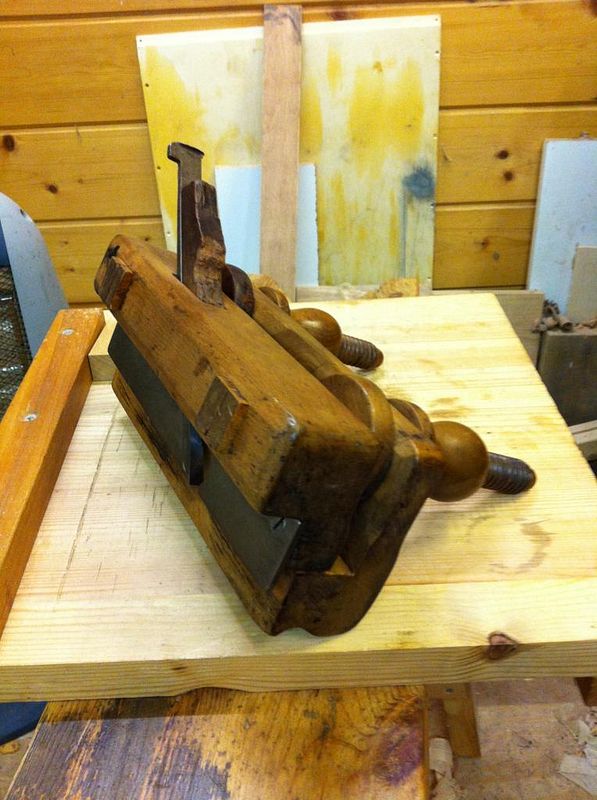Corneel
Established Member
Recently I aquired a nice German plow plane. There is no makers mark on the plane itself but the iron has a mark from J.P. Arns a well known smithing factory in Remscheid. As usual with wooden plow planes, there is a bit of a problem with the rearskate. When aquired it wasn't inline with the frontskate. The result is that the plane is quite unusable because it tends to see-saw back and forth on the skates.
So I filed them flush. But under wedge pressure the problem reappears. So before I continue with draconic modifications I seek the wisdom of this forum. How do you go about to rectify this situation? The rear skate is attached with four countersunk woodscrews.
So I filed them flush. But under wedge pressure the problem reappears. So before I continue with draconic modifications I seek the wisdom of this forum. How do you go about to rectify this situation? The rear skate is attached with four countersunk woodscrews.



































